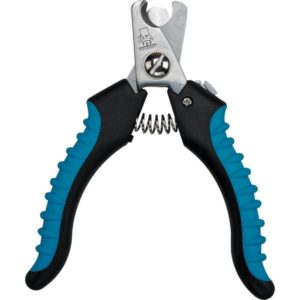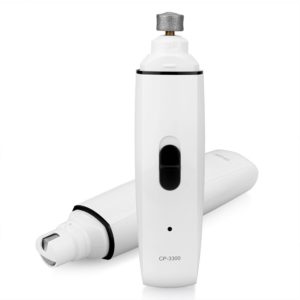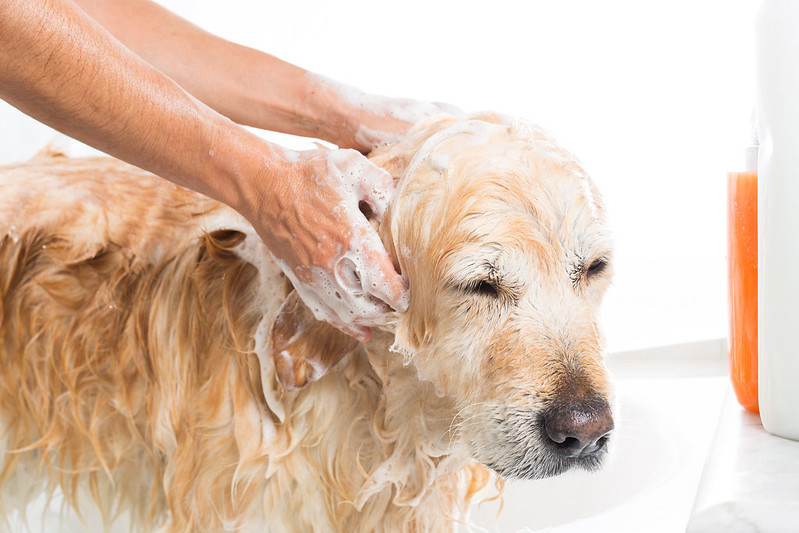Last Updated on June 26, 2024
The metallic click-clack of dog nail clippers used to send my Beagle, Bailey, scrambling under the bed, her whimpers echoing from the darkness. Those sharp blades and the pressure on her delicate nails filled her with a fear I understood all too well. I dreaded the whole ordeal myself, constantly worried about nicking the quick and causing her pain. The memory of that one time I did – the sharp, coppery scent of blood, Bailey’s panicked yelp, the way her paw trembled in my hand – still makes me cringe.
That’s when I decided to explore the world of dog nail grinders. Could this gentler approach be the answer to our nail-trimming nightmares? The sheer number of options was overwhelming, though. Which one would be right for Bailey, with her sensitive paws and skittish nature?
Clippers: A Love-Hate Relationship
 Let’s face it, clippers are the old faithful of dog nail trimming. They’re readily available, relatively inexpensive, and get the job done quickly. But for dogs like Bailey, who flinch at the slightest pressure, clippers can feel like medieval torture devices.
Let’s face it, clippers are the old faithful of dog nail trimming. They’re readily available, relatively inexpensive, and get the job done quickly. But for dogs like Bailey, who flinch at the slightest pressure, clippers can feel like medieval torture devices.
There are two main types:
- Scissor-like clippers: These resemble, well, scissors, and are typically used for larger breeds with thicker nails. They offer more leverage, but that extra force can be intimidating for a small dog.
- Guillotine clippers: These have a hole where you insert the nail, and a blade that slices down when you squeeze the handles. They’re generally more precise, but that sharp, sudden cut can be startling for a sensitive pup.
Grinders: A Humming Hope
 Dog nail grinders, on the other hand, work by gently grinding down the nail instead of cutting it. They use a rotating grinding bit, often made of diamond, to slowly wear away the nail. Think of it like a gentle sanding process, rather than a chop.
Dog nail grinders, on the other hand, work by gently grinding down the nail instead of cutting it. They use a rotating grinding bit, often made of diamond, to slowly wear away the nail. Think of it like a gentle sanding process, rather than a chop.
The first time I tried a grinder on Bailey, I held my breath, anticipating a panicked retreat. The whirring sound did make her ears perk up, but as I gently touched the grinder to her nail, she surprised me. Instead of pulling away, she stood still, her body tense but her tail giving a hesitant wag. The grinding sensation was clearly less stressful for her than the sharp snap of the clippers.
Clippers vs. Grinders: Weighing the Pawsibilities
So, which tool is the ultimate champion? It truly depends on your dog’s personality and your comfort level. Here’s a more nuanced look at the key differences:
Safety First:
- Clippers: The risk of cutting the quick is real, especially with dark nails where the quick is harder to see. Clippers with sensors can help, but they’re not foolproof. Even with careful trimming, the pressure applied before the cut can be uncomfortable for some dogs.
- Grinders: The gradual grinding action makes it less likely to hit the quick, but you still need to be cautious and avoid grinding too close to the base of the nail. The noise and vibration can be unsettling for some dogs, so it’s important to introduce the grinder slowly and use positive reinforcement.
Comfort Zone:
- Clippers: The sharp, sudden cut can be painful and startling for dogs, especially those who are already anxious about nail trimming. The pressure applied before the cut can also cause discomfort.
- Grinders: The grinding sensation is generally more tolerable for dogs, but the noise and vibration can be a deterrent for some. It’s important to choose a grinder with a quieter motor and introduce it gradually to your dog.
Time is of the Essence:
- Clippers: Quick and efficient, making them a good choice for dogs who tolerate the process.
- Grinders: Take longer, as you need to grind down the nail gradually. This can be a good thing for anxious dogs, as it allows for a slower, more controlled approach.
Sound Check:
- Clippers: Relatively quiet, unless your dog is reacting with yelps and howls!
- Grinders: Can be noisy, especially cheaper models. Look for grinders with quieter motors if your dog is sensitive to noise.
Budget Bites:
- Clippers: Generally more affordable than grinders.
- Grinders: Can be more expensive, especially for models with multiple speed settings, LED lights, and quieter motors.
Here’s a comparison table for Dog Nail Clippers vs. Dog Nail Grinders.
| Feature | Dog Nail Clippers | Dog Nail Grinders |
|---|---|---|
| Ease of Use | Simple and straightforward. Good for quick trims. | Can take longer to use, but offer more precision. |
| Comfort for Dog | May cause quick pain if not done correctly. | Generally considered more comfortable for dogs, as it grinds nails slowly. |
| Noise Level | Typically quieter. | Can be loud and unsettling for dogs. |
| Cost | Generally more affordable. | Can be more expensive. |
| Suitability for Different Nail Types | Works well for most nail types, but may be difficult for thicker nails. | Can be adjusted for different nail types and is suitable for thicker nails. |
Note: It’s important to always be mindful of your dog’s comfort and safety when trimming their nails.
How to Trim Your Dog’s Nails Safely and Painlessly
No matter which tool you choose, the key to successful nail trimming is making it a stress-free experience for both you and your dog. Here’s a step-by-step guide to help you trim with confidence:
- Gather Your Gear: You’ll need your chosen tool (clippers or grinder), styptic powder (in case you nick the quick), and high-value treats that your dog goes crazy for. Bailey, for example, goes bonkers for peanut butter.
- Pawsitive Prep: Start by getting your dog used to having their paws handled. Gently touch and massage their paws, offering treats and praise. Gradually work your way up to touching their nails. The key is to create positive associations with paw handling.
- Identify the Quick: This is the pink part of the nail that contains blood vessels and nerves. Cutting into the quick is painful and will cause bleeding. If your dog has light-colored nails, the quick is usually visible. If they have dark nails, it’s trickier. Trim a tiny bit at a time, and look at the cut edge of the nail. As you get closer to the quick, you’ll see a small, grayish-white oval in the center. Stop there!
- Trim Time:
- Clippers: Cut the nail at a 45-degree angle, just below the quick. Avoid squeezing the clipper too hard, as this can cause discomfort. If your dog has thick nails, you might need to use a scissor-style clipper for more leverage.
- Grinder: Hold the grinder at a slight angle and gently touch it to the nail, moving it back and forth in a slow, controlled motion. Don’t grind in one spot for too long, as this can generate heat and cause discomfort.
- Reward Generously: After each nail, give your dog a treat and praise them enthusiastically. Make the whole experience as positive as possible.
- Take Breaks: If your dog gets stressed or restless, take a break and try again later. Don’t force the issue, as this will only increase their anxiety.
- Seek Professional Help: If you’re still unsure or uncomfortable trimming your dog’s nails, don’t hesitate to seek help from a veterinarian or professional groomer. They can show you the proper techniques and help your dog get used to the process.
The Tail End: Finding the Right Fit for Your Furry Friend
Choosing the right nail-trimming tool is a personal decision. There’s no one-size-fits-all answer. Consider your dog’s temperament, nail type, and your own comfort level.
For Bailey, the grinder was a game-changer. The gentle grinding action eased her anxiety, and the lack of sharp blades gave me peace of mind. It takes a bit longer, but seeing her relaxed and even wagging her tail during nail trims makes it worth every extra minute.
Remember, no matter which tool you choose, patience and positive reinforcement are key. Make nail trimming a positive experience for your dog by using treats, praise, and lots of love. And if you’re ever unsure, consult with a veterinarian or professional groomer for guidance
 Dog N Treats All dogs deserve to be pampered
Dog N Treats All dogs deserve to be pampered


